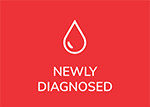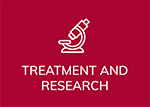
By Susan Leclair
The previous article brings up the next question – how do you balance sensitivity versus specificity? Specificity means that one, and only one, item will cause a reaction in the test and as such it reflects the percentage of healthy people who are correctly identified as not having some illness. How good would a pregnancy test be if, in addition to pregnancy, it also turned positive for ovarian cysts or an infection in the lungs or whatever. Sensitivity is a measure of the percentage of sick people who are correctly identified as having some illness. Another way understanding sensitivity is it measures how much of the substance needs to be present for the test to become positive. These two attributes are like a seesaw. Any time you try to increase one, you sacrifice the other. Here is a historical example. The first blood test for diabetes was a test that quantified glucose along with many other sugars. Since the sugar you wanted to know about was in that group, you could follow someone’s diabetes and their compliance with diet without really having an absolute, accurate number. Physicians follow trends, so how bad could it be to follow a “group of sugars, one of which is glucose” if what they are really following are the increases and decreases over time. So, in that example, specificity isn’t as important as sensitivity.
In order to diagnose cardiac disease as rapidly as possible, physician want a highly sensitive test. Troponin is a compound that is only released from the heart when the cells are damaged and in exceptionally small amounts. Even the tiniest increase in troponin could trigger a diagnosis. After all, a precise diagnosis would lead to corrective bypass surgery that could limit damage or at least allow the patient to be treated as correctly as possible. But troponin is also released by cardiac cells in situations other that heart attack. And one of those is emotional stress – which might just happen on your way to the ER in an ambulance. Now, emotional stress causes only slight increases and you could argue that it can be figured out by a good medical history and physical. But occasionally, people make a type of antibody (called “cross-reacting” or heterophile) that is not very precise and can interact with lots of things so it can seem that the troponin is increased when in fact, it is not. This is a situation much more difficult to determine than judging emotional stress. In order for a test to concentrate only on amounts of troponin that should arise from a heart attack, you would need to lessen the sensitivity so that it does not quantify the stress release increase or presence of heterophile antibodies.
As with everything in life, you sacrifice something when you increase speed. The two criteria here are the quality of the test sample and the issue of false negatives and false positives. When you swing the seesaw to speed, you sacrifice accuracy. Think of all the discussions about COVID19 testing and you will hear this concern from NIH, CDC and your state public health officials. Some of the current antibody tests out there cannot be validated by different laboratories and some tests may result in false positives due to non-specificity, i.e., cross-reactivity with other coronaviruses and even other classes of viruses.
Quality of Sample:
Many of you might remember reading a bone marrow report stating something about the quality of the specimen. The reliance on a test result is dependent on these major criteria: specimen quality, test performance and the correct interpretation of the results.
Specimen quality itself has 3 topics. The first is patient preparation. For example, did the patient fast before a blood collection that requires fasting? Or did the patient take/not take medications? The second is the actual collection itself. Failing to fill the tube completely or using the wrong tube or, in the case of COVID19 testing, not reaching the nasopharyngeal area because it makes the patient uncomfortable, all result in a specimen that has decreased quality. The third aspect is the labeling and transport. Suppose your bone marrow sample had no label or had a label marked “smith”. That sample would have to be thrown away because no one in the laboratory knows for sure to whom it belongs. Ditto for S. Smith (Stephen, Susan?) or Susan Smith with no birthdate or address. I know for a fact that there is some woman with my exact name who lives in my town. Only the birthdate and the address tell us apart. And, of course, it would always be good to tell the laboratory staff to which physician this report should be sent.
Assuming that the specimen is of excellent quality and has been transported correctly, what else can go wrong? Will the number of false positives and false negatives cause difficulty in assessing the result? As of this writing, there are 1,037,400 reported cases of COVID19 in a population of 327,000,000 people. That makes an approximate frequency rate of 1 for every 327. So, let’s assume you test a random group of 1000 people. If a screening test has a 1% false positive rate, you will get 10 false positive and 3 true positive results. If that screening test has a 1% false negative rate, then for that 1000 people you test, 10 persons may come away with an unfounded sense of security and continue to spread the virus.
The degree of sensitivity (exactly how many malignant cells do I have) must be balanced against the probability of obtaining false results (how many extra procedures will I need? Or will I not get a test that I do need?) and how significant is that false result going to be? Maybe a false negative on a pregnancy test will simply result in another test on another day. Maybe a false positive from a screening test requires an extra colonoscopy. Or not. The future of all testing is to get more and more sensitive and specific while lessening the issues of false reactions.
Susan Leclair is Chancellor Professor Emerita at the University of Massachusetts Dartmouth; Senior Scientist, at Forensic DNA Associates; and Moderator and Speaker, PatientPower.info – an electronic resource for patients and health care providers.
Originally published in The CLL Society Tribune MRD Special Edition.
















